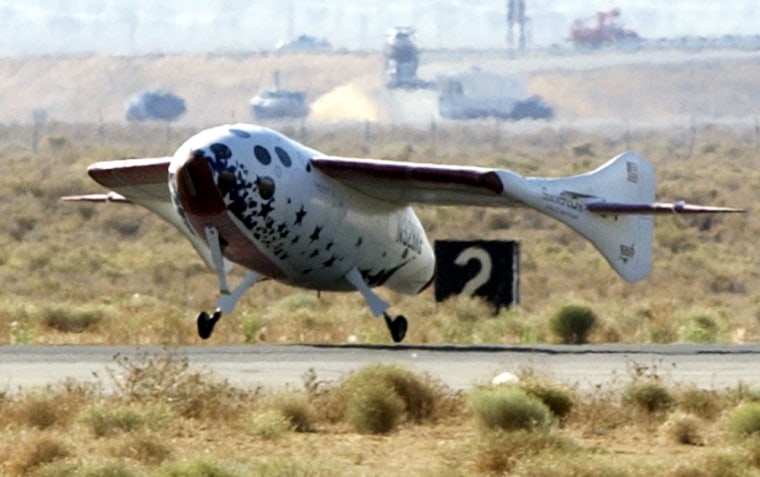The first privately financed manned rocket to reach space was mostly fueled by a billionaire. In Oklahoma, a state tax credit helped get a reusable launch vehicle started. In California, entrepreneurs are looking to government contracts for help.
Such different approaches to funding the new small-scale commercial space race emerged as one of the themes at a weekend conference hosted by the Space Frontier Foundation, a group that hopes to expand space access beyond government programs.
SpaceShipOne’s three dramatic spaceflights in recent weeks, its capture of the $10 million Ansari X Prize and the global attention it gave the budding industry infused the conference with optimism. But with investment still a question mark, notes of caution accompanied enthusiasm.
“There isn’t anything that is typical,” said Jeff Greason, president of XCOR Aerospace, which seeks government contracts to develop technologies that can be adapted to its goal of developing a passenger rocket. “Every participant in the industry has gone down a very different path.”
The benefit of billionaires
In a conference session on investing in what are being called “alternative space companies,” the role of billionaires backing projects — like Paul Allen’s $20 million for SpaceShipOne — was seen as useful in attracting other investors.
“The business community looks at these fellows and says they are very smart people and follows where they are going,” John Spencer, president of the Space Tourism Society, said during the opening day of the conference.
But billionaire funding can’t cover the development of everything required for commercial space infrastructure, said Thomas Olson, chief executive of the Colony Fund, a mutual fund being created to tap into public interest.
“We’re starting from scratch,” he said, describing communication and data systems and the parts that go into spaceships. “There’s not enough wealthy patrons to be able to build this stuff by themselves.”
The first Colony Fund is intended to be a $500 million fund, which he acknowledged “doesn’t seem like a lot in the grand scheme of things” but will serve as the financial market’s equivalent of SpaceShipOne, Olson said.
“It is a test model to see how well this is going to work,” Olson said. “Future funds, whether we make them or other people get into the game and start making them, are going to attract a lot more money, and they’re going to attract institutional money at the same time, which kind of legitimizes things a lot for everybody.”
Optimism and pessimism
Walt Anderson, chief executive officer of the aerospace technology company Orbital Recovery Corp. and founder of the venture capital company Gold & Appel, said he saw reasons for optimism and pessimism.
“It’s been a pretty good month for this group because if all your friends thought you were nuts and commercial space wasn’t real, you could watch the evening news and find out that there was some reality here,” he said.
But he then bluntly warned the group that fledgling U.S. companies may face competition from entrepreneurs around the globe because of the way the U.S. government enforces restrictions on technology.
“Europe has the same type of regulations like ours to prevent technologies from falling into the wrong hands. The difference is, their implementation of those same recommendations is more realistic and allows us to run our business.”
